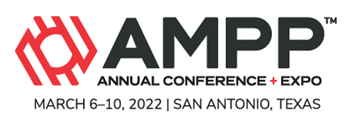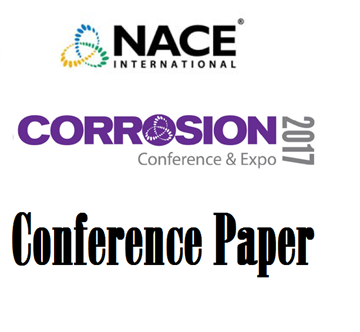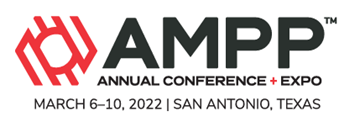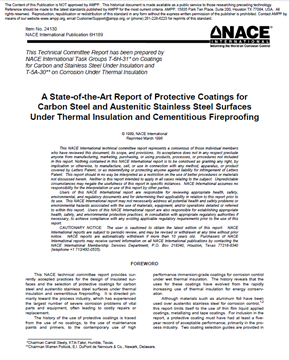Search
Coatings and Linings
View as
Sort by
Display
per page
Minimizing Health, Safety, and Environmental Challenges Associated with Traditional Blasting by Using Vapor Abrasive Blasting
Product Number:
41215-889-SG
Publication Date:
2015
$20.00
Moisture Management In Thermal Insulations For In-Service And Out Of Service Pipelines
Product Number:
51322-17594-SG
Publication Date:
2022
$20.00
Moisture Test methods, Comparisons, Commonalities and Dissimilarities
Product Number:
41215-929-SG
Publication Date:
2015
$20.00
Moisture Testing and Inspecting for Concrete Floors to Receive Coatings
Product Number:
41216-991-SG
Publication Date:
2016
$20.00
Monitoring Dynamic Corrosion and Coating Failure Events on Buried Steel Using Electrode Arrays
Product Number:
51317--9238-SG
ISBN:
9238 2017 CP
Publication Date:
2017
$20.00
Monitoring Localized Corrosion Distribution Of Steel Bar In Concrete With OFDR Distributed Optical Fiber
Product Number:
51322-17777-SG
Publication Date:
2022
$20.00
Motivating Green Paints in Middle East Challenges
Product Number:
41214-853-SG
Publication Date:
2014
$20.00
Multitask Learning Framework For Screening Of Corrosion Inhibitors For Mild Steel
Product Number:
51322-17757-SG
Publication Date:
2022
$20.00
Myth or Fact: Higher Surface Profile Increases Coating Adhesion
Product Number:
41216-969-SG
Publication Date:
2016
$20.00
NACE 6A192/SSPC-TR 3-2000-SG (Chinese), Dehumidification and Temperature Control During Surface Preparation, Application, and Curing for Coatings/Linings of Steel Tanks, Vessels, and Other Enclosed Spaces
Product Number:
24239-SG
Publication Date:
2000
$179.00
NACE 6H189-1989, A State-of-the Art Report of Protective Coatings for Carbon Steel and Austenitic Stainless Steel Surfaces Under Thermal Insulation and Cementitious Fireproofing
Product Number:
NACE 6H189-1989
Publication Date:
1989
$179.00












